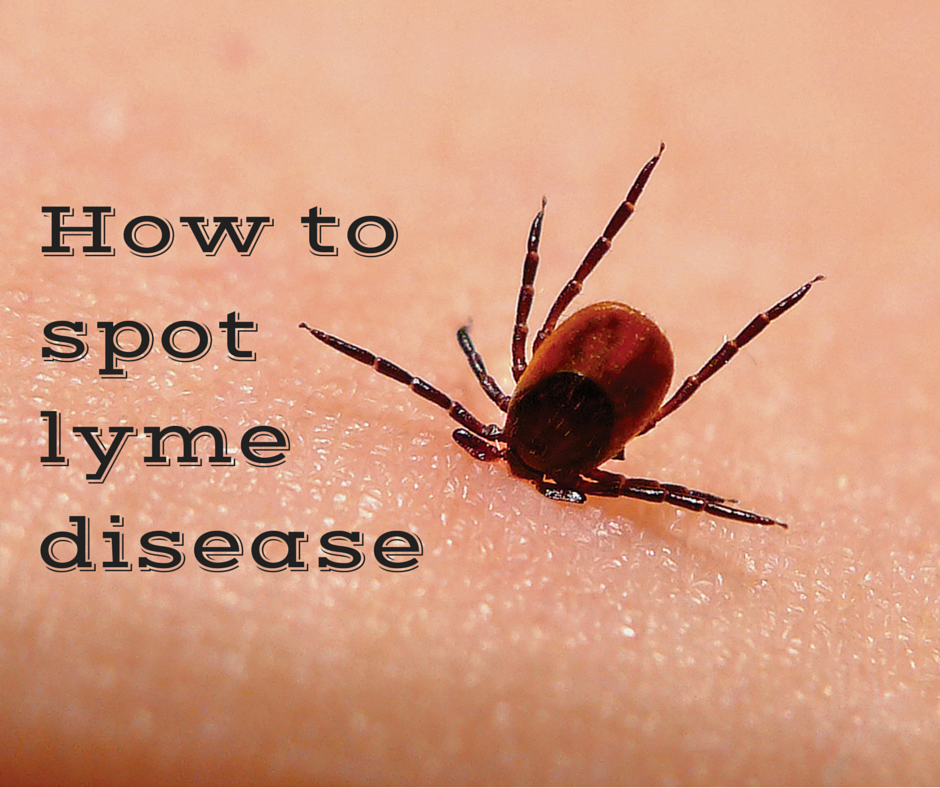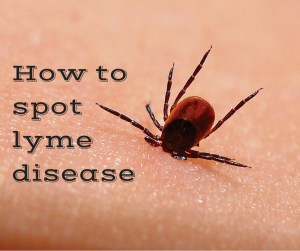
 As we enjoy this hot summer spending time gardening, camping, hanging out by the lake or travels to new destinations where you might spend a lot of time outside. We need to be aware of what’s around us. Im talking about critters, more specifically, ticks. If you live or spend time in grassy and heavily wooded areas, you are more likely to encounter the deer ticks who thrive there, and who carry the bacterium that causes Lyme Disease. Although the prevalence of Lyme disease is higher in some other areas of the country, not all ticks cause Lyme disease and the overall risk for contracting Lyme disease is relatively low.
As we enjoy this hot summer spending time gardening, camping, hanging out by the lake or travels to new destinations where you might spend a lot of time outside. We need to be aware of what’s around us. Im talking about critters, more specifically, ticks. If you live or spend time in grassy and heavily wooded areas, you are more likely to encounter the deer ticks who thrive there, and who carry the bacterium that causes Lyme Disease. Although the prevalence of Lyme disease is higher in some other areas of the country, not all ticks cause Lyme disease and the overall risk for contracting Lyme disease is relatively low.
WHAT IS LYME DISEASE?
Lyme disease is the most common tick-borne illness in North America and Europe. Caused by the spirochete Borrelia burgdorferi, Lyme Disease is spread as deer ticks feed on the blood of animals and humans. The ticks are brown and when young, they’re often no bigger than the head of a pin, which can make them nearly impossible to spot.
HOW DO PEOPLE GET LYME DISEASE?
To contract Lyme disease, an infected deer tick must bite you. The bacteria enter your skin through the bite and eventually make their way into your bloodstream. In most cases, to transmit Lyme disease, a deer tick must be attached for 36 to 48 hours. If you find an attached tick that looks swollen, it may have fed long enough to transmit bacteria.
Lyme disease is transmitted through a bite from a specific type of tick. The animals that most often carry these insects are white-footed field mice, deer, raccoons, opossums, skunks, weasels, foxes, shrews, moles, chipmunks, squirrels, and horses.
WHAT ARE THE STAGES, SIGNS AND SYMPTOMS OF LYME DISEASE?
Early Lyme Disease (3-30 days after a bite)
- A red, expanding rash or “bull’s-eye” rash at the site of a tick bite (80% of people with Lyme will develop a rash)
- Fatigue
- Chills
- Fever
- Headache
- Muscle and joint aches
- Swollen lymph nodes
Early Disseminated Disease (days to weeks after a bite)
- Multiple lesions
- Cardiac symptoms such as an unusually slow heartbeat, lightheadedness, or fainting
- Neurologic symptoms such as headaches, neck stiffness, weakness (often facial muscles), or numbness (Neurologic symptoms occur in approximately 10% or adults with untreated Lyme)
Late Disease (months to years after a bite)
- Joint pains and arthritis, often affecting large joints, can be persistent or intermittent
- Neurologic symptoms such as pain, difficulty with memory or thinking, and odd sensations such as numbness (Late neurologic manifestations of Lyme disease are rare)
- Skin symptoms including nodule formation and swelling followed by thinning of the skin (Skin symptoms of late Lyme disease are more prevalent in Europe)
Post-Lyme Disease Syndrome
- Nonspecific symptoms such as headache, fatigue, and joint pains may linger for months after the treatment for Lyme disease has ended.
- Fibromyalgia develops in some people after treatment for Lyme disease. This is a post-infectious syndrome that is not caused by an active infection with B. burgdorferi
Treatment Options
If your symptoms are caused by Lyme disease, you need to take an antibiotic to kill the bacteria. Four types of antibiotics are used to treat this illness:
- Doxycycline
- Penicillin
- Erythromycin
- Cephalosporin
It is important to get treated for your symptoms right away because untreated Lyme disease can have lasting effects. Preventing Lyme disease is easier than dealing with the symptoms later. Rather make the effort to get to a hospital emergency room or an urgent care clinic as soon as possible.
Preventing Lyme Disease
Fortunately, there are several things you can do to reduce your risk of being bitten by an infected tick. If you enjoy hiking, stick to the center of the hiking trail whenever you are in wooded areas. Avoid piles of leaves, high grass, and brushy areas. Take these additional steps to further reduce your risk:
- Wear long-sleeved shirts and long pants outdoors to keep ticks from attaching to your body.
- Use an insect repellant to keep ticks away from you.
- Tuck your shirt into your pants to prevent ticks from attaching to your back or stomach.
- Use approved tick control products on your pets.
- Check your body for ticks before entering the house.
If you or someone you know had contact with a tick and would like to get that checked out visit your local Coastal Urgent Care!
